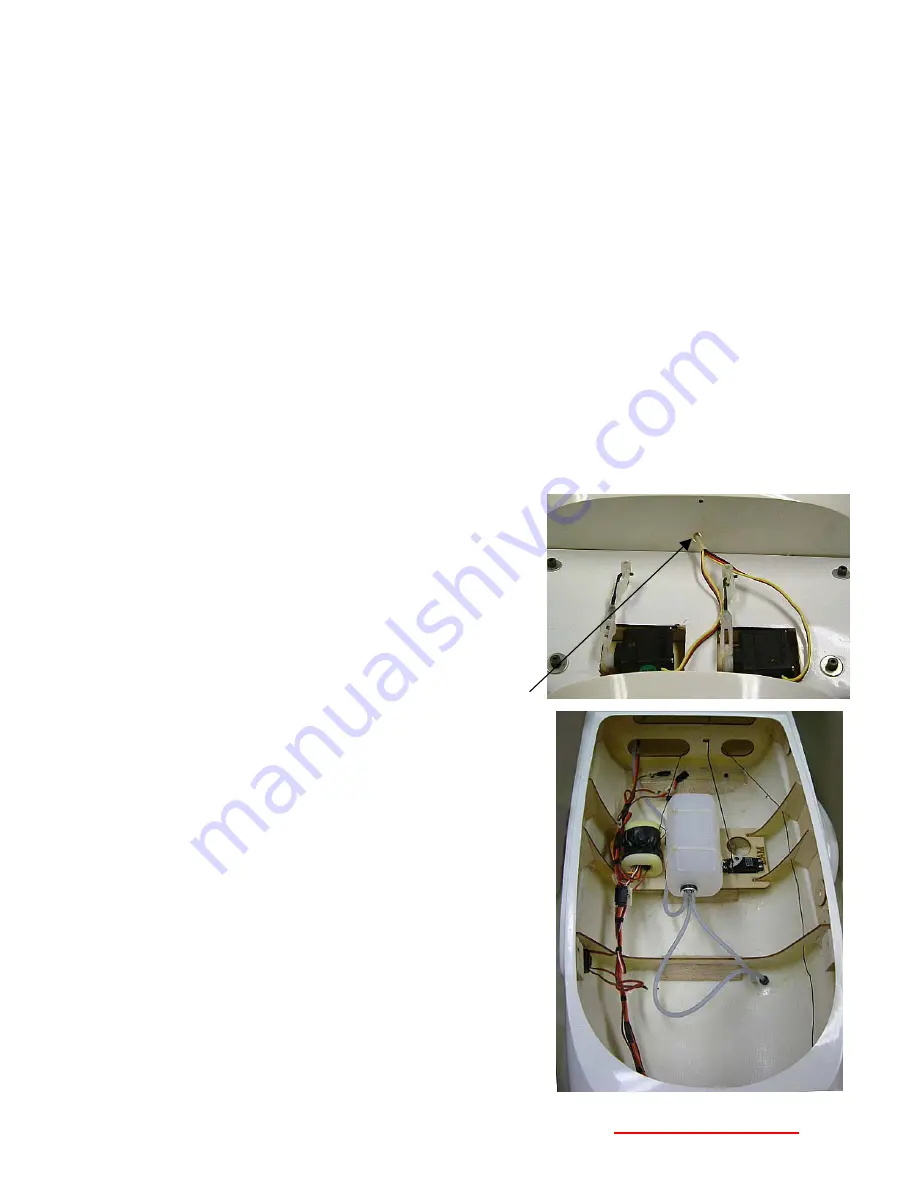
Experimental Aircraft Models
- 29 -
WWW.RCHomebuilts.com
o
(2) 12” Extensions for the steering and elevator servos
o
(4) ‘Y’ connectors – (2) for Rudders/Steering, (1) Ailerons, (1) Elevators
2) Plug-in the wires to the receiver outlets as follows:
Rudder outlet – a ‘Y’ connector. Label both ends ‘R’
Elevator outlet – a 12” extension. Label the servo end ‘E’
Throttle outlet – a 6” extension. Label the servo end ‘T’.
Aileron outlet – a ‘Y’ connector. Label both ends ‘A’.
3) Into one end of the Rudder ‘Y’, plug in another ‘Y’.
You will now have thee available ends into which servos will plug.
Two will receive the rudder extensions, (which will enter from the sides of the
fuselage, aft of the cockpit, from the wings.) Label these ‘R’
In the remaining third end, plug in a 12” extension. Label the far end (S)teering.
o
Plug that free end into the steering servo.
4) Into the end of the Elevator 12” extension, plug a ‘Y’.
When the canard is installed the ‘Y’ will connect to the two servos mounted in the
canard.
5) Into the Aileron ‘Y’ will plug the ends of the aileron extensions (Which will also enter the
fuselage from the sides, aft of the cockpit along with the rudder wires.)
6) Plug the throttle servo into the 6” extension.
7) Temporarily install the canard using four 4-40 x
1” socket head bolts (#25). Drill/file a clearance
hole in the fuselage above the trailing edge for
the elevator servo wires to enter.
Look from the inside of the fuselage and
you will see there is an open section in the
frame. Place the hole in this area so as to
not weaken the frame.
a. You can make the hole oblong to allow
the wire connectors to fit through.
b. This hole will have a fairly sharp edge,
from which you’ll want to protect the
servo wires, possibly wrapping them in
tape where they enter through the hole.
You can tape them together if you
stagger the ends, so your hole won’t
need to be too large.
8) With the wings not yet on, plug in the elevators
turn on the radio and make sure the elevators,
throttle and steering all work properly.
(Remember, elevators go down to make the
plane go up!)
9) Wrap the receiver in foam and secure the foam
with duct tape or equivalent. The receiver
should be able to ‘float’ a little inside the foam.







































